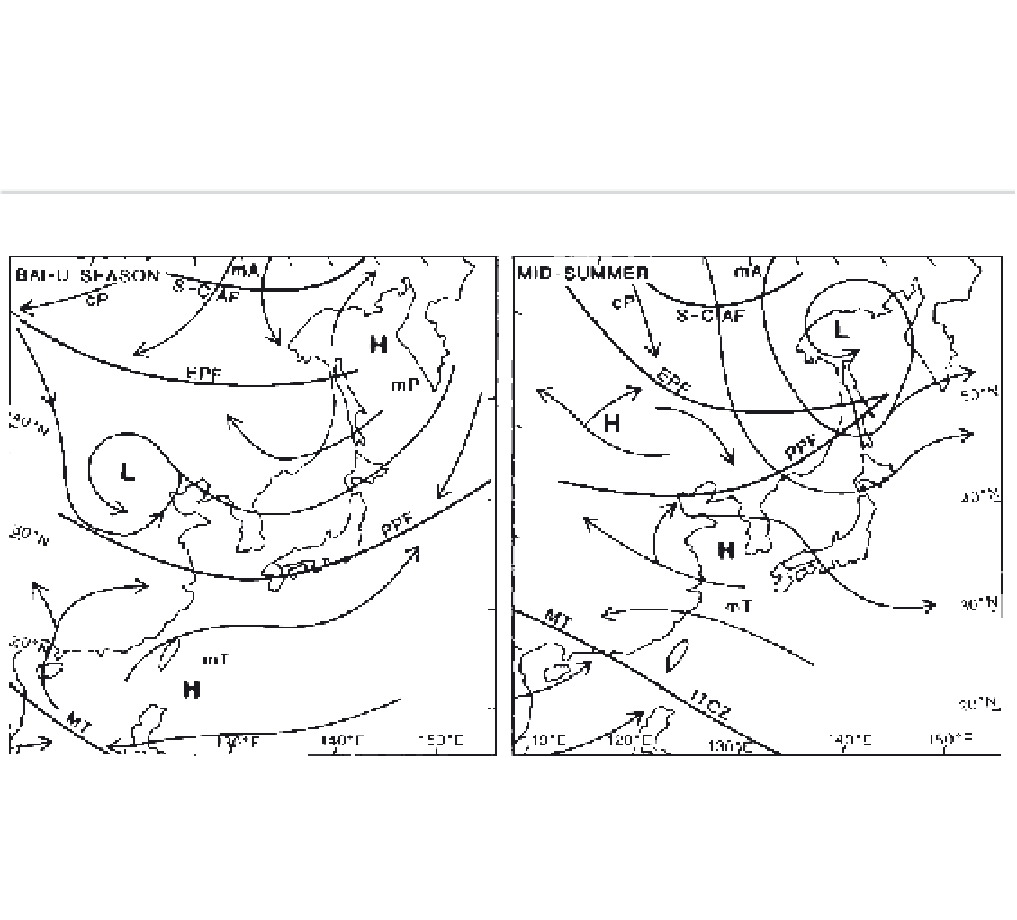Geoscience Reference
In-Depth Information
Table 11.2
Surface circulation over China.
January
July
North China
60% of winds from W, NW and N
57% of winds from SE, S and SW
Southeast China
88% of winds from N, NE and E
56% of winds from SE, S and SW
Figure 11.35
Schematic surface circulation pattern and frontal locations (Siberian-Canadian Arctic S-C AF, Eurasian polar EPF, Pacific
polar PPF and monsoon trough MT/intertropical convergence zone MT/ITCZ) over East Asia during the Bai-u (i.e. July to August) season.
Source
: Matsumoto (1985). Reproduced by permission, University of Tokyo.
for example, 64 per cent of the annual total occurring
at Tianjin (Tientsin) (39°N) in July and August.
Nevertheless, much of the rain falls during thunder-
storms associated with shallow lows, and the existence
of the ITCZ in this region is doubtful (see Figure 11.1).
The southerly winds, which predominate over northern
China in summer, are not necessarily linked to the
monsoon current further south. Indeed, this idea is
the result of incorrect interpretation of streamline maps
(of instantaneous airflow direction) as ones showing air
trajectories (or the actual paths followed by air parcels).
The depiction of the monsoon over China in Figure
11.24 is, in fact, based on a wet-bulb temperature value
of 24°C. Cyclonic activity in northern China is attrib-
utable to the West Pacific polar front, forming between
cP air and much-modified mT air (Figure 11.35).
In central and southern China, the three summer
months account for about 40 to 50 per cent of the annual
average precipitation, with another 30 per cent or so
being received in spring. In southeast China there is a
rainfall singularity in the first half of July; a secondary
minimum in the profile seems to result from the west-
ward extension of the Pacific subtropical anticyclone
over the coast of China.
A similar pattern of rainfall maxima occurs over
southern and central Japan (Figure 11.36), comprising
two of the six natural seasons that have been recog-
nized there. The main rains occur during the
Bai-u
season of the southeast monsoon resulting from waves,
convergence zones and closed circulations moving
mainly in the tropical airstream around the Pacific
subtropical anticyclone, but originating partly in a
southwesterly stream that is the extension of the
monsoon circulation of South Asia (Figure 11.23). The
southeast circulation is displaced westward from Japan
by a zonal expansion of the subtropical anticyclone




